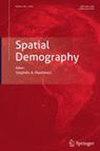多样性还是隔离?亚特兰大街区人口统计的十年空间分析
IF 1.1
Q3 DEMOGRAPHY
引用次数: 0
摘要
几十年来,亚特兰大市经历了惊人的城市扩张、种族重组和移民模式。在本文中,我们试图回答一个首要问题:亚特兰大的经济发展和城市扩张是否伴随着种族多样化的社区?还是亚特兰大的经济发展导致了种族融合的景观?我们使用了来自美国人口普查局、国内税收署和收入动态面板研究的人口数据。首先,我们使用热点分析来研究亚特兰大黑人人口集中的空间模式的时间变化。其次,我们使用差异指数(D)和互动指数(I)来估计白人和黑人之间的隔离程度。第三,我们计算了亚特兰大三个次区域的移民效果。结果显示,黑人人口的热点地区位于亚特兰大的中部和中南部,在过去 40 年中主要向东部和南部方向扩展。亚特兰大市北部各县的种族多样性普遍增加,但南部和周边各县的种族多样性较少。值得注意的是,亚特兰大南部并没有像亚特兰大北部那样迎来经济发展。移民效率指数显示,近年来,亚特兰大郊区吸引了更多的移民,无论是来自亚特兰大地区内部还是美国其他地区,与亚特兰大市区相比都是如此。近几十年来,郊区 I 的居民区在种族上变得更加多样化,预计未来这一趋势也将在其他地区蔓延。本文章由计算机程序翻译,如有差异,请以英文原文为准。
Diversity or Segregation? A Multi-decadal Spatial Analysis of Demographics of Atlanta Neighborhoods
The City of Atlanta has seen phenomenal urban expansion, racial re-composition, and migration patterns over decades. In this paper, we try to answer overarching question: Has the economic development and urban sprawl in Atlanta been accompanied by racially diverse neighborhoods? Or has the economic development in Atlanta led to a racially integrated landscape? We use demographic data from the U.S. Census Bureau, the Internal Revenue Service, and the Panel Study for Income Dynamics. First, we use hotspot analysis to study temporal changes in spatial patterns of concentration of the black population in Atlanta. Second, using the index of dissimilarity (D) and interaction index (I), we estimate the extent of segregation between whites and blacks. Third, we calculate the migration effectiveness in three sub-regions of Atlanta. The results show that hotspots of the black population are located in the central and south-central parts of Atlanta, and have expanded predominantly in the eastern and southern directions during the last four decades. Racial diversity has increased generally in the counties immediately north of the city proper, but the southern and peripheral counties had less racial diversity. Remarkably, southern Atlanta did not witness the economic development in the same way as northern Atlanta. The migration effectiveness index shows that, in recent years, Atlanta suburbs attracted more migrants, both from within the Atlanta region and from the rest of the United States, as compared to the Atlanta city proper. In recent decades, neighborhoods in the Suburb-I becoming racially more diverse, and one would expect this trend will extend in other regions too in the future.
求助全文
通过发布文献求助,成功后即可免费获取论文全文。
去求助
来源期刊

Spatial Demography
DEMOGRAPHY-
自引率
0.00%
发文量
12
期刊介绍:
Spatial Demography focuses on understanding the spatial and spatiotemporal dimension of demographic processes. More specifically, the journal is interested in submissions that include the innovative use and adoption of spatial concepts, geospatial data, spatial technologies, and spatial analytic methods that further our understanding of demographic and policy-related related questions. The journal publishes both substantive and methodological papers from across the discipline of demography and its related fields (including economics, geography, sociology, anthropology, environmental science) and in applications ranging from local to global scale. In addition to research articles the journal will consider for publication review essays, book reviews, and reports/reviews on data, software, and instructional resources.
 求助内容:
求助内容: 应助结果提醒方式:
应助结果提醒方式:


